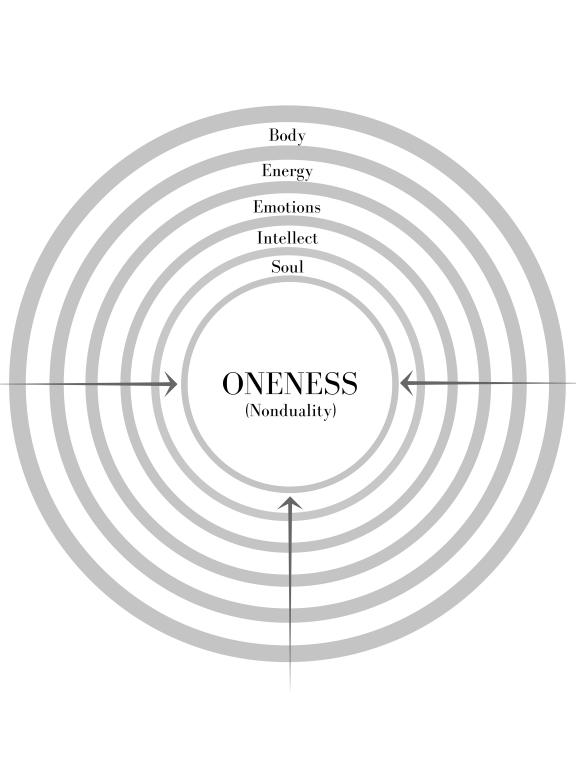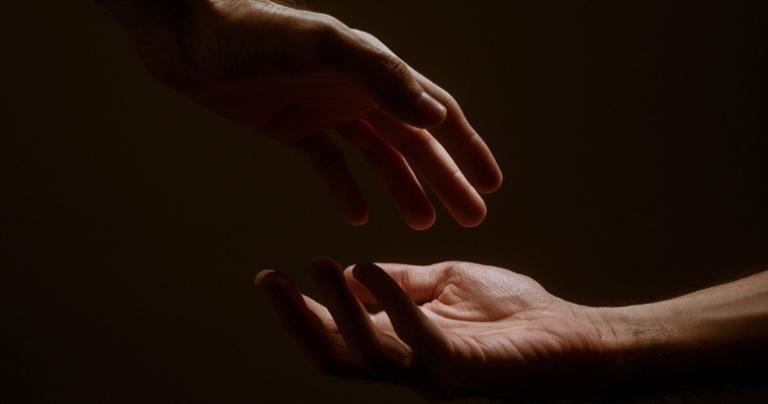
The experiential path of Oneness is contemplative in nature and consists of introspection, meditation, observation, and copious amounts of silence. Due to the extroverted nature of most human beings, the Oneness path has historically not been widespread. Even though most religious traditions provide oneness practices—often referred to as mystical or spiritual practices—they usually aren’t offered until the practitioner in question has had enough of the world.
Reserved for the Willing
The path of Oneness is a reclusive approach that has been reserved for those willing to give up worldly belongings to become ascetics, monks, or nuns. Furthermore, this path is considered exceptionally difficult, both from intellectual and practical standpoints. Whether the practice is called Yoga, Sufism, Kabbalah, Taoism, Christian Mysticism, Buddhism, or something else, it involves a lot of training, usually meditative in nature, and deep intellectual contemplation about the underlying nature of the world. As such, the path is not for everyone, nor should it be.
“In the beginning, was only being, one without a second. Out of himself, he brought forth the cosmos and entered into everything in it. There is nothing that does not come from him. Of everything, he is the inmost Self. He is the truth; he is the Self supreme. You are that.”
Chandogya Upanishad
An ancient Vedanta treatise
Translated by Eknath Easwaran
Permanent Oneness State
Over the centuries, only a few have attained a permanent oneness state—known to the rest of us as enlightenment—but their insights into the essential nature of the world, including mind, body, and spirit, have been nothing short of amazing.
In stark contrast to the expansive path of Goodness, the inward path of Oneness is one of exploration, detachment, and embodiment. Practitioners study the nature of the body, life energy, emotions, intellect, and so on—even master some of those elements along the way—and then detach from the veils that do not meet the criterion of oneness, which is that it must always be present and never changes. If it ceases to be present or changes, then it is not the eternal essence, not the all-pervading reality.

Promises and Perils
Inner peace is the central promise of the Oneness path. The wisdom traditions say that once a practitioner knows oneness firsthand—in the same way that he or she would experientially know the taste of chocolate, the feel of the sun, or the refreshing nature of water—then fear of death, which is said to be the root cause of all other fears, will drop away. Oneness devotees have been reported to show remarkable equanimity. For them, there is no high or low, up or down, good or bad. There is only this, only now, only oneness.
Due to our unpredictable human nature, this path has numerous perils. Two of the most common ones are apathy and mistaken identification. One is detachment without embodiment, and the other is inaccurate attachment.
Detachment Without Embodiment
Apathy takes hold when the practice of detachment—letting go of the veils that hide the underlying oneness—leads a practitioner to think that nothing in the world of duality is of importance, that nothing is better or worse, that it’s all a dream, all a mirage. This is detachment without embodiment. An example would be a driver who thought he was the car he was driving. If he realized that he and the car were, in fact, separate, then that would be a great discovery (detachment). However, after the discovery was made, he would need to continue driving the car (embodiment); otherwise, the results might be disastrous—in his case, a car crash, in the spiritual aspirant’s case, apathy, depression, or worse.
Historically, most meditation practitioners, especially those who’ve lived in spiritual communities, have been taught to counteract this tendency with hours upon hours of service. Such benevolent physical activities have been shown to keep them grounded. The two practices, meditation on one hand and service on the other, appear to balance each other out and keep practitioners from succumbing to melancholy and total withdrawal.
“Enlightenment does exist. It is possible to awaken. Unbounded freedom and joy, oneness with the Divine, awakening into a state of timeless grace—these experiences are more common than you know and not far away. There is one further truth, however: They don’t last… after the honeymoon comes the marriage.”
Jack Kornfield (1945)
Buddhist Monk and American Author
Inaccurate Attachment
Mistaken identification is another common distraction on the Oneness path. Here, the practitioner may start to identify with the practices rather than the goal, thusly making the means equal to the end. Using driving as a metaphor again, the driver would start obsessing over his driving skills, the appearance of his car, or the fuel he chooses for it rather than focusing on where he is going. When mistaken identification happens on the spiritual path, breathing techniques and physical exercises, which are important in their own right, and emotional visualizations and healing practices, which can serve as stepping-stones if used effectively, can replace the end goal of unveiling oneness. The practitioner attaches himself to the tools and forgets that he or she is working towards a particular outcome.
The Oneness Question
To avoid these and other perils, it is vital to keep the ultimate goal in mind at all times, which is why people on the Oneness path repeatedly ask a simple question: Does this action, emotion or thought help or hinder my attempts to unveil oneness?
Gudjon Bergmann
Author and Mindfulness Teacher
Amazon Author Profile
Recommended books:
- Monk of All Faiths: Inspired by The Prophet (fiction)
- Spiritual in My Own Way (memoir)
- Co-Human Harmony: Using Our Shared Humanity to Bridge Divides (nonfiction)
- Experifaith: At the Heart of Every Religion (nonfiction)
- Premature Holiness: Five Weeks at the Ashram (novel)
- The Meditating Psychiatrist Who Tried to Kill Himself (novel)
Picture: CC0 License












